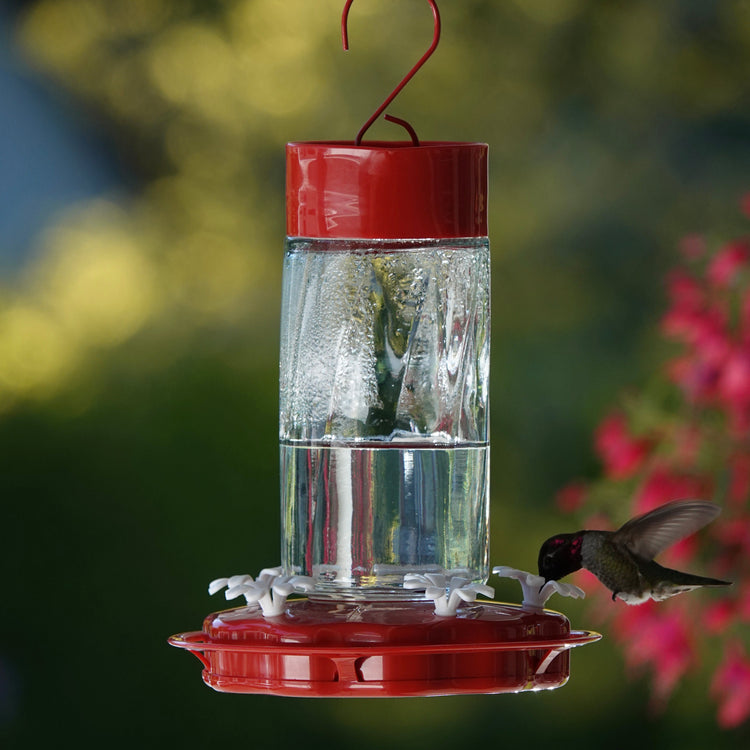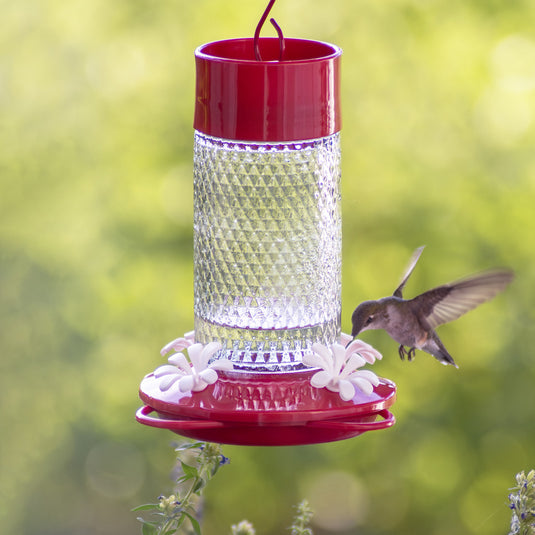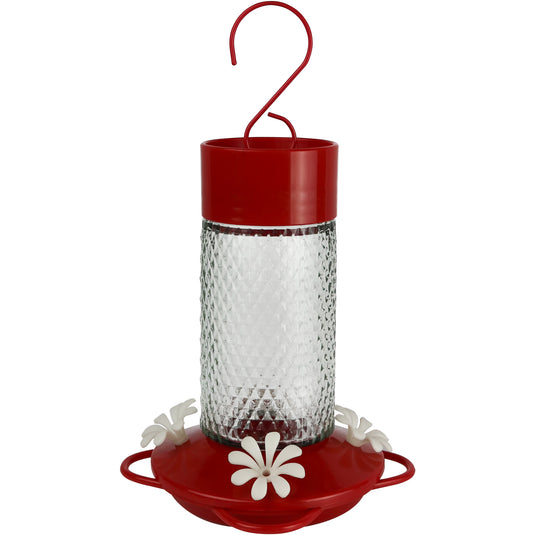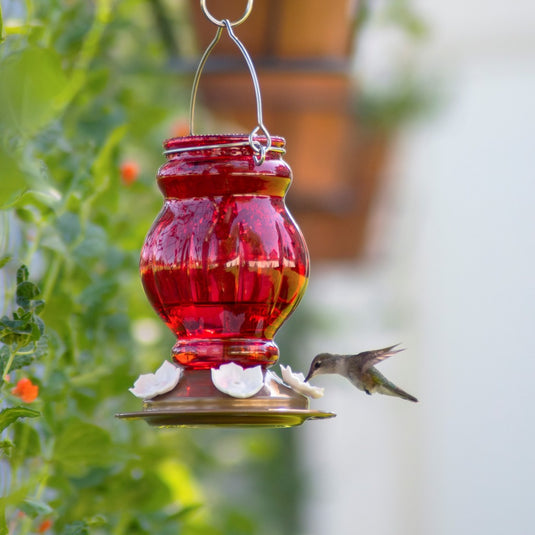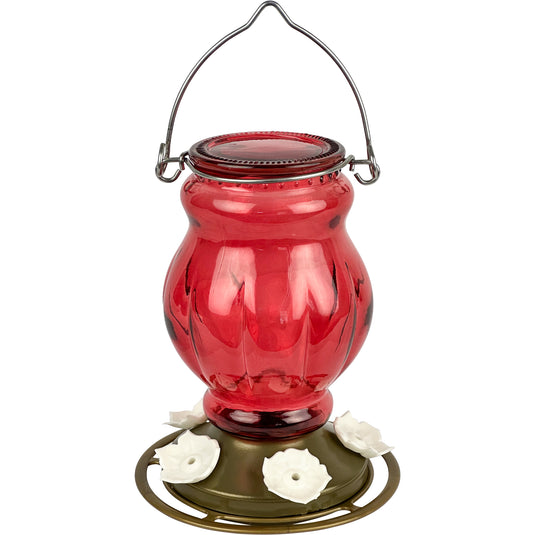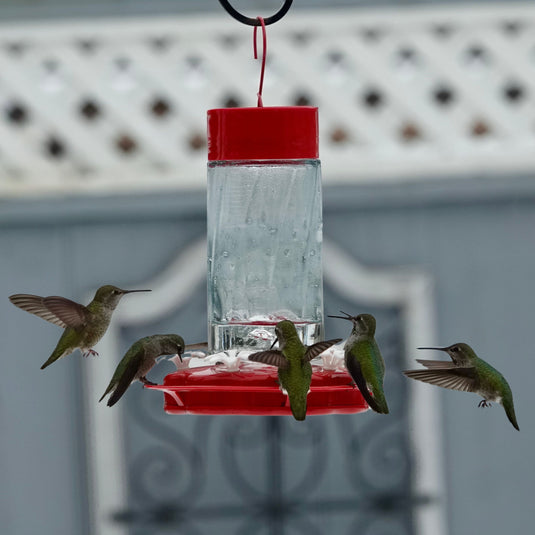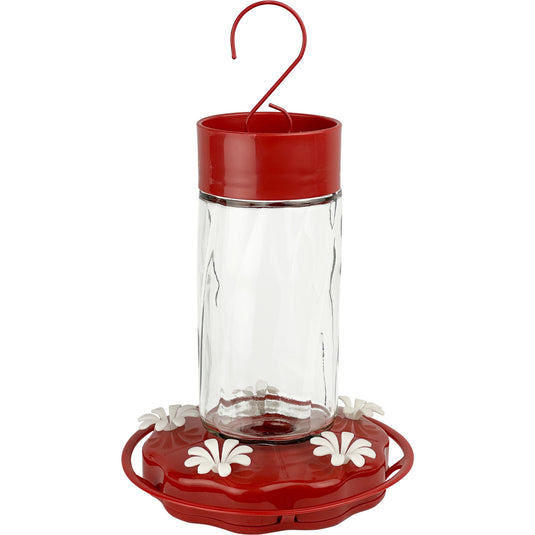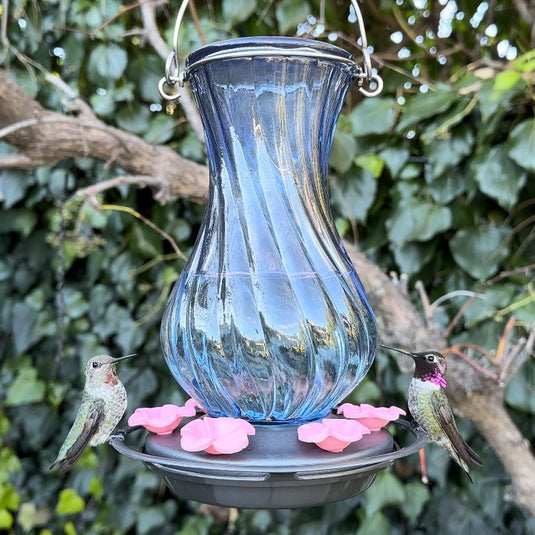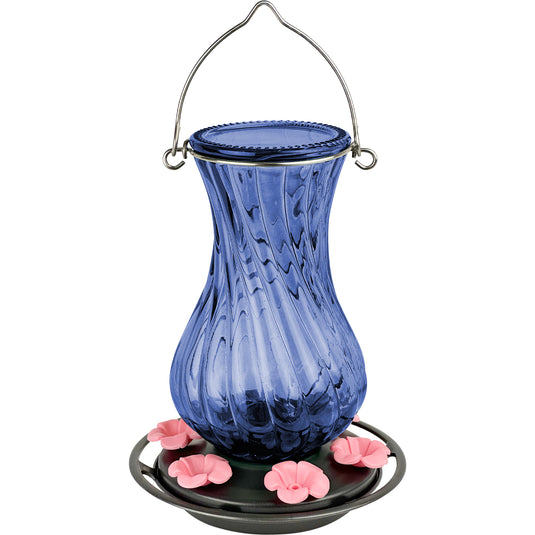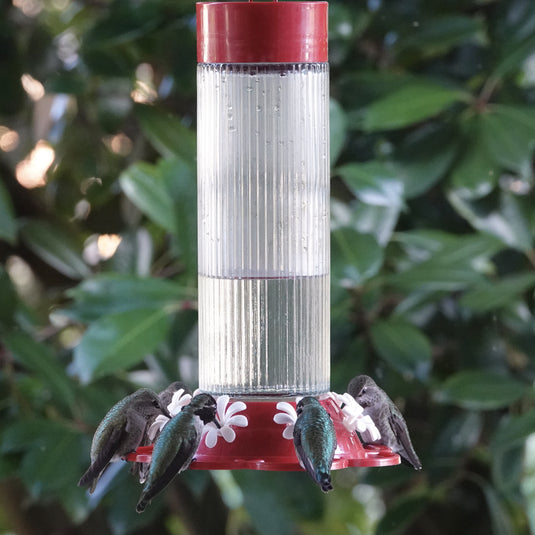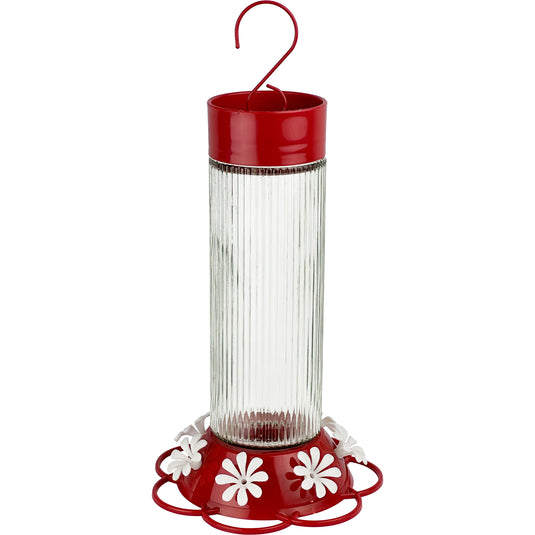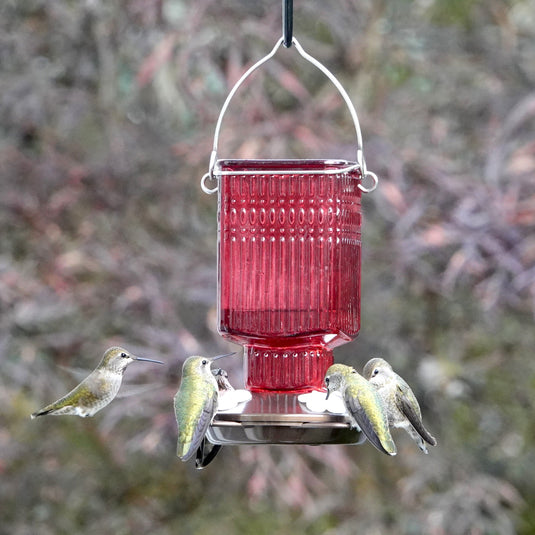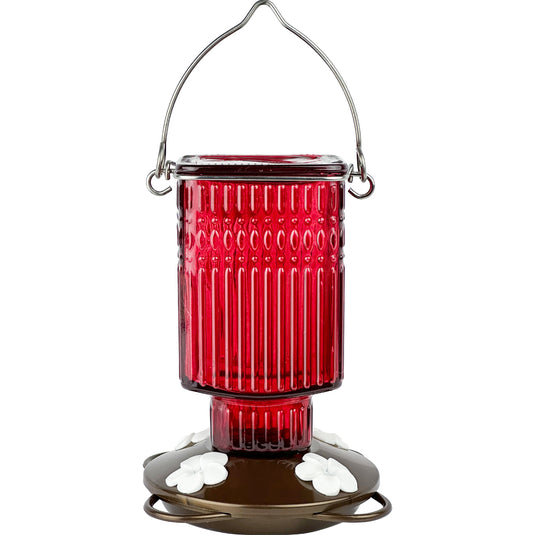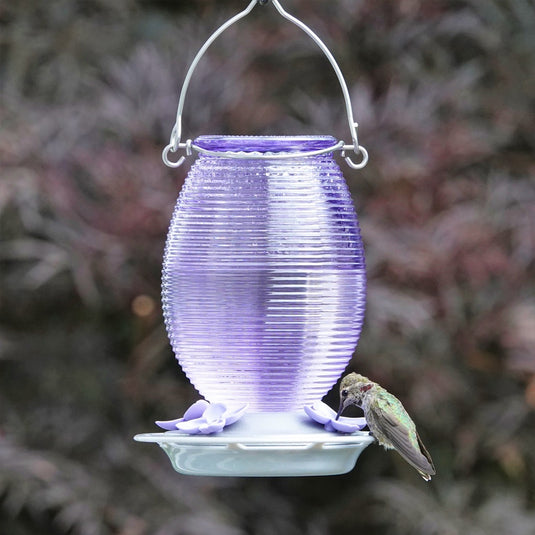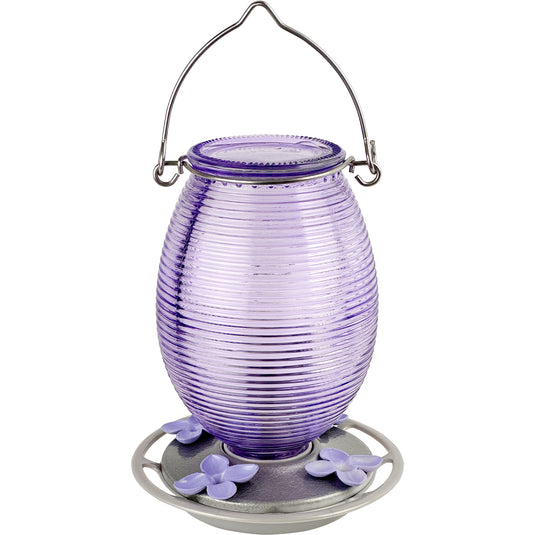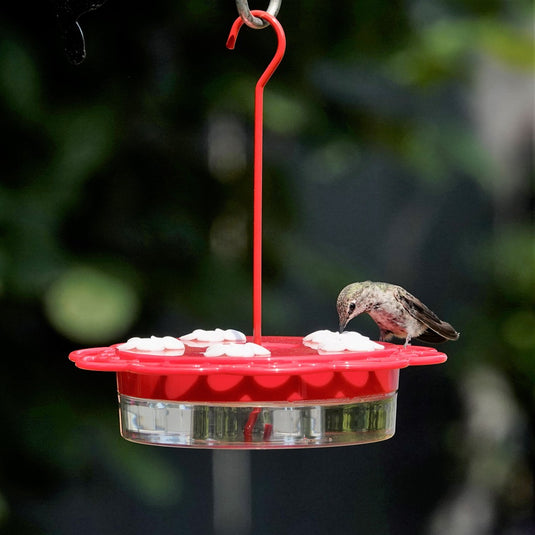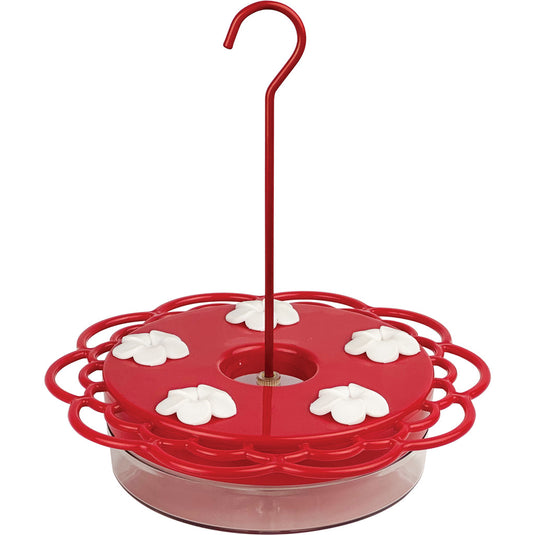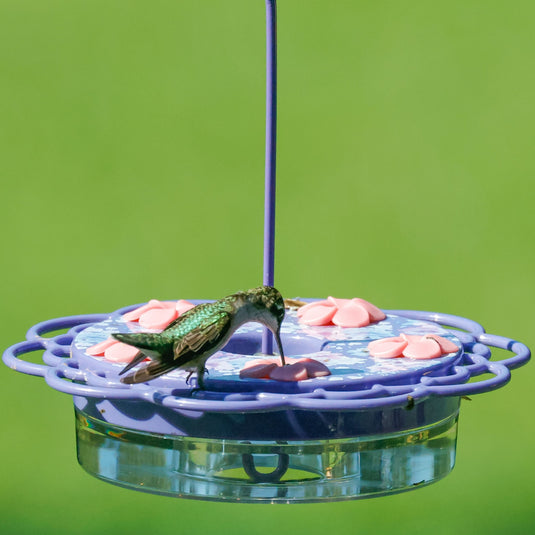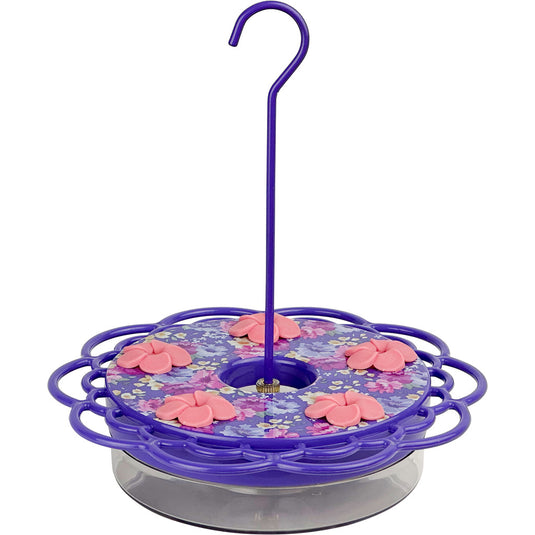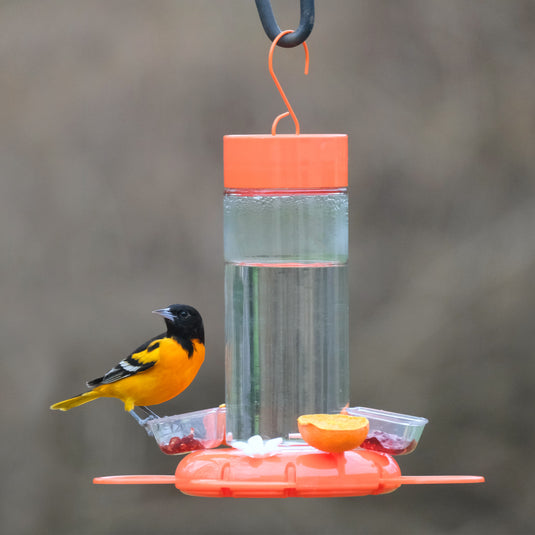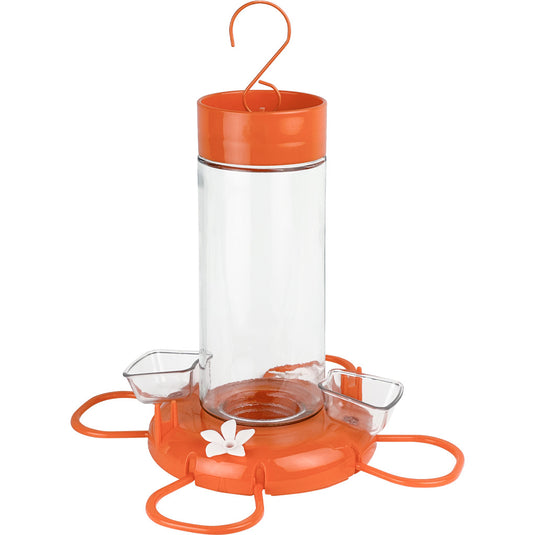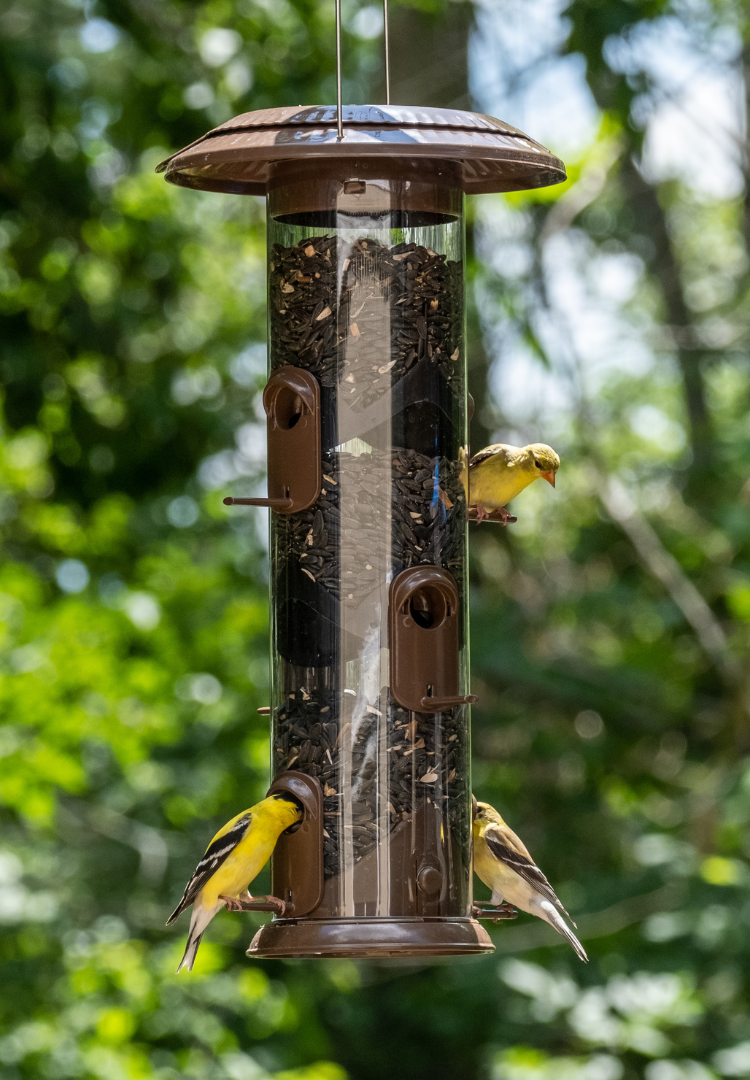
Pictured: Anna’s Hummingbird feeding from Scarlet Swirl Gravity Hummingbird Feeder
Want to attract more hummingbirds to your yard? The secret is simple: offer fresh, homemade hummingbird nectar made with just sugar and water. This easy DIY approach is not only cost-effective but also safer than many commercial options that contain dyes or additives.
In this complete guide to hummingbird food made at home, you’ll learn the best hummingbird food ratio (1 part sugar to 4 parts water), how to make it step by step, what ingredients to avoid, and how to store and maintain your feeder properly. Whether you’re a backyard birding beginner or a seasoned hummingbird host, these tips will help you keep your feeders filled with healthy, safe sugar water all season long.
How do you make hummingbird food?

Here is the best hummingbird nectar recipe ratio: Use one part white granulated sugar to four parts water. This 20% sugar concentration best mirrors the sugar concentration naturally found in flowers preferred by hummingbirds.
Ingredients:
- ¼ cup white granulated sugar
- 1 cup water
Instructions:
- Boil the water for approximately 2 minutes
- Add the sugar and stir to dissolve thoroughly.
- Cover and allow to cool before using or pouring into a clean storage container.
What type of sugar should I use for hummingbird food?
Always use regular white granulated sugar, also known as refined white sugar or white table sugar.
What to avoid:
- Brown sugar, raw (turbinado) sugar, cane sugar, powdered sugar: These types of sugars can contain molasses, iron or cornstarch which can be harmful to hummingbirds.
- Honey, agave, corn syrup, maple syrup: Even natural sweeteners should be avoided as they are difficult to digest and promote the growth of harmful fungi leading to infection in hummingbirds.
- Artificial sweeteners (Equal, Splenda, Sweet’N Low, etc.): These artificial sweeteners have no calories and do not provide any nutritional value for hummingbirds. They may also be harmful for hummingbirds to consume.
- Red dye: While many commercial nectars contain red dye to attract hummingbirds, studies suggest that artificial dyes are unnecessary and harmful to hummingbird health.
What kind of water should I use for hummingbird food?
When making your own hummingbird nectar, you can use tap, well, or spring water – just make sure it’s free of contaminants and harmful chemicals. Whatever type of water you choose, it’s best to boil it for two minutes before adding sugar to ensure it's safe and clean for the hummingbirds.
What to avoid:
- Distilled water: Distilled water lacks the natural minerals that hummingbirds rely on for their health.
- Softened water: Water softeners may introduce added salts and minerals into the water.
How long does hummingbird nectar last in the fridge?
You can make a larger batch of hummingbird nectar and store it in the refrigerator for up to two weeks. This makes refilling your feeder quick and convenient, so keeping it fresh every few days is no hassle. Just be sure to store the nectar in a clean, airtight container and label it with the date so you know when it’s time to make a new batch.
How often should you change hummingbird feeder nectar?
To be a responsible host to hummingbirds, it's essential to keep your feeder clean and filled with fresh nectar. Every 4–5 days, take it down, empty any leftover sugar water, and give it a thorough rinse. During hot weather or if your feeder is in direct sunlight, you may need to clean and refill it more often, as nectar can ferment faster in the heat.
How can you tell if hummingbird nectar is bad?
Recognizing the signs that your hummingbird feeder needs cleaning is essential to maintaining a healthy feeding environment.
- Cloudiness: Fresh nectar is clear, so any cloudiness or discoloration indicates that the nectar has started to ferment and needs to be replaced immediately.
- Black spots: Black or dark spots inside the feeder or on the flower ports are signs of mold growth, which can be harmful to hummingbirds.
- White strings: Stringy or filmy white substances in the nectar or on feeder parts are likely fungal growths - another clear sign it's time to clean.
- Sour smell: A vinegary or sour odor indicates the nectar has spoiled and must be discarded.
If you notice any mold or residue, it’s crucial to clean the feeder thoroughly before refilling it with fresh nectar. Disassemble your feeder and rinse it with hot water - adding a splash of vinegar can help prevent mold buildup. Check for any black mold; if you spot it, place glass feeders in the dishwasher for a deep clean. For plastic feeders, scrub by hand using a pipe cleaner or small brush with either a 1:9 bleach-to-water solution or mild, unscented dish soap. Using a brush specifically designed for cleaning hummingbird feeders can help you reach all the nooks and crannies where mold might be hiding. Rinse thoroughly and allow all parts to dry completely before refilling.
How to keep hummingbird nectar from freezing

Pictured: Anna’s Hummingbirds feeding from Antique Glass Gravity Hummingbird Feeder
Sugar water freezes at a temperature lower than pure water, typically around 29 degrees Fahrenheit. If you experience these cold temperatures, we recommend bringing nectar feeders indoors overnight or removing the nectar to prevent it from freezing. Put them back out first thing in the morning and keep an eye on temperatures throughout the day to ensure the nectar stays liquid. If you have multiple feeders, consider rotating them – keeping one indoors while the other is outside – so your birds always have access to fresh, unfrozen nectar.
Can hummingbird nectar get too hot?
When temperatures rise, hummingbird nectar can become dangerously hot. Some studies suggest that overly warm nectar may affect a hummingbird's metabolic rate and potentially cause harm. Providing cool, fresh nectar is essential for keeping your feathered visitors healthy and hydrated during hot spells.
Here's how to cool down hummingbird nectar:
- Place feeders in the shade: Position feeders under trees, awnings, or other shaded areas to help prevent nectar from overheating.
- Rotate feeders: Keep a second feeder indoors and swap it out on rotation to give birds access to cooler nectar.
- Change nectar frequently: In hot weather, nectar can spoil quickly. In extreme temperatures, you might need to replace it once or twice a day to prevent heating to unsafe temperatures and maintain freshness.
- Use a feeder with a glass reservoir: Glass hummingbird feeders tend to keep nectar cooler than plastic ones because they heat up more slowly and maintain a steadier temperature, especially when placed in the shade.
RECOMMENDED GLASS HUMMINGBIRD FEEDERS:
Note: Freezing nectar might seem like a good idea, but it can form ice crystals that damage your feeder and clog feeding ports - making it harder for hummingbirds to drink. Instead, prepare nectar in advance, store it in the fridge, and serve it at room temperature.
Keeping nectar cool and clean not only protects hummingbirds—it encourages them to keep coming back!
Have more questions about hummingbird nectar? Let us know in the comments - we're happy to help!
RELATED ARTICLES
Hummingbird feeder challenges and solutions

